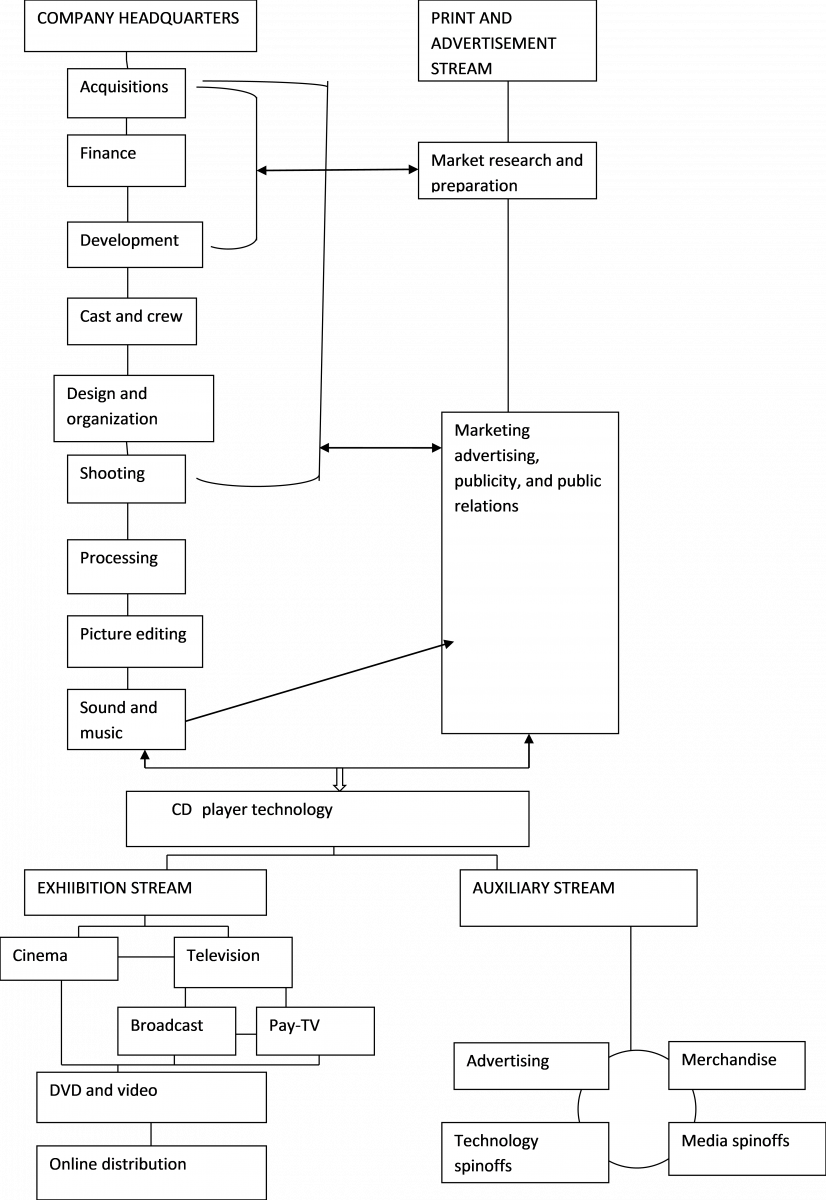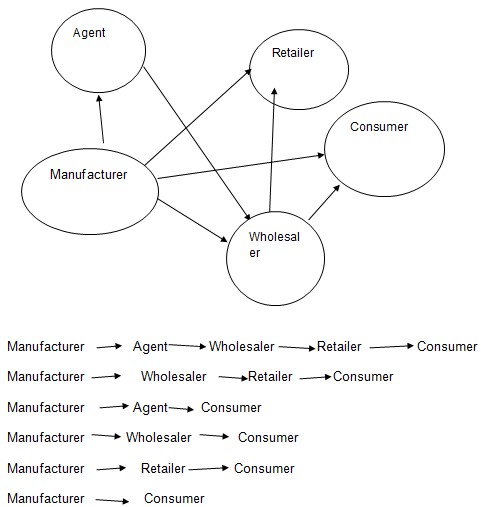Demand affects supply and distribution of a given product provided by an organization. If the demand is high then the manufacturer offers more supply and distribution to cater for the needs and wants of their customers. If not done, the customers become dissatisfied since customers tend to prefer availability of a product at the time and place they need it. These activities and challenges stimulate the need for a supply chain and distribution channels. A CD player manufacturer has to be very careful due to the high competition in the market and increased awareness of customers (Chopra, 2004, p. 87)
Supply chain
Every organization has many objectives that are to be realized within the realm of the supply chain. The supply chain is concerned with the obtaining of raw materials for an organization, manufacture and distribution of finished output. It is made up of many stakeholders including firms that are involved in the manufactures of goods and providence of services. Such firms obtain their inputs from other firms and individuals while selling their output to consumers. Distribution is the key to the success of a supply chain. Due to advanced technology and globalization, firms operating in dynamic business environments today utilize an integrated supply chain (Shugos, 2006, p. 1).
Title of the Product
The name selected identifies the manufacturer. The title should reflect the content of the CD player sector. In addition, it should be able to sell the product in order to establish the brand strength.
Design
The manufacturer illustrates the segment of the supply chain and the place of formulation and exploitation of the investments (Yao, 2009, p. 13; Lamb, 2007, p. 322).
The order of the listing of players in each segment
The listing helps create power and influence at first sight. The subjective judgment and generalization positions the CD player. Its finance and manufacture is a highly complex and collaborative process. However, the CD player does not reflect their personal financial input or their entitlement to the levels of income. The supply chain therefore, interprets in terms of creative value and influence as well as the financial input and investment (Yao, 2009, p. 14; Lamb, 2007, p. 340).
Development
This is the process of creating or acquiring the idea of a CD player, creating the play, securing development, funding for the writer, and initiating the manufacturing financing process. Development includes packaging of the project, budgeting, and researching the shoot. In the diagram, development is different from the manufacture since development financing comes from a different source to manufacture financing. It also shows how the creative influence of the key players change over the different segments of the manufacturing process (Yao, 2009, p. 15; Lamb, 2008, p. 336).
Financing and pre-selling
It involves financing the CD player. It is the most complex and expensive stage of the supply chain where the leadership and negotiation qualities of the manufacturer become vital to ensure the shareholders accept to support the manufacture financially. Pre-sales is the process of selling a film in advance before manufacture to some parts of the world to attach the strength of perceived value of the director and transmit (Yao, 2009, p. 17; Lamb, 2008, p. 340).
Manufacture: shoot and post
This is the stage where the CD player is shot and edited. It includes the addition of computer generated special effects and music. The director, financiers, and manufacturer are involved in approving the final edit (Yao, 2009, p. 17; Lamb, 2008, p. 342).
The diagram below shows a CD player technology entertainment supply chain (Lamb, 2007, p. 346).


The numbers represent:
- Inventory planning
- Finished goods transported
- Planning inventory
- Raw materials transported
- Raw materials purchased
- Production scheduled
- Market research
- Customer receives the product
- Customer demands product
- Sales people demonstrate product
- Orders place
- Finished goods transported
- Inventory planning
Distribution channels
Distribution channels are the coordination of flow of goods and materials across the market to create value to the creation activities to enhance superior customer service in the market. The level of involvement in the market determines the basic structure at the initial stage where the manufacturer relies on the available structures dominated by very few levels of the channels of distribution. Mainly it is between the manufacturer, the market branches, and the retailers. However, with high levels of involvement, the structures become more complex. The level of the members expands as well (Kaminsky, 2004, p. 139)
At this stage, the distributor prepares to deliver the segment of exhibition and exploitation in each territory. Due to changing business models, the level of marketing determines whether the manufacturer makes a loss or a profit (Kaminsky, 2004, p. 146)
The diagram below illustrates the route taken by the CD player technology from manufacturer to the consumer (Lamb, 2008, p. 376).

Radio frequency identification (RFID)
This technology uses electronic tags to store data. The electronic data transmits to a scanning antenna to become readable. RFID technology in a CD player serves the purpose of its identification and tracking. Some of them are small enough to fit onto a package, container or even an animal or human (Thornton, 2006, p. 187).
Uses of radio frequency identification (RFID) technology
This technology allows an increase in supply chain visibility in transporting CD players and helps reduce loss and unnecessary expenditures and wastes. The technology assesses the amount of product electronically inventoried maximizing profits and customer experience. It automates the issue and return of CDs (Rafinejad, 2007, p. 34)
The technology scans vehicles transporting the product saving time and boosting the efficiency of supply chain services. It also identifies defective or unsafe products as well as product transportation paths and ultimate points of delivery
The technology enables collection of data to take place in environments that prohibit normal data gathering such as crowded and physically dangerous areas. RFID helps the manufacturer during collection of finances for production due to the instant use of the RFID-enabled smart cards (Rafinejad, 2007, p. 34)
The manufacturer uses radio frequency identification technology to avoid CD player technology shortage by giving an accurate picture of the product cycle times. In the target marketplace, the manufacturer combines the RFID, computers, and databases to track products, analyze consumer trends, and lower costs for consumers, all while helping to maintain or increase profitability (Plunkett, 2007, p. 15).
Types of customer information recorded in the RFID technology
Product transport: the manufacturer affixes RFID tags to all product pallets and cases before shipping. The tags are electronically time stamped and then entered into the central computer of the goods tracking system. The tapped pallets can then monitor the product from the distribution channel to the sales floor (Hull, 2010, p. 88).
Warehouse dispatch: goods being stored pass from the central warehouse to the dispatch area. The RFID transceiver reads the codes on the pallets and cases and passes it to the flow system (Hull, 2010, p. 89). Warehouse management and storage processes: the goods flow recorded by RFID registers the goods at the stockroom
Transport of goods into the saleroom: RFID reader is located at the store stock room exit doors to identify every pallet and cases moved into the store. The feedback is from the RFID goods flow system (Hull, 2010, p. 89).
References
Chopra, S. (2004) Supply chain management: strategy, planning, and operation. New York, NY: Prentice Hall.
Hull, G. (2010) The Music Business and Recording Industry: delivering Music in the 21st Century. New York, NY: Taylor and Francis.
Kaminsky, P. (2004) Managing the supply chain: the definitive guide for the business professional. New York, NY: McGraw-Hill Professional.
Lamb, C. (2007) Marketing. Boston, MA: Cengage Learning.
Lamb, C. (2008) Essentials of marketing. Boston, MA: Cengage Learning.
Pluckett, J. (2007) Plunkett’s Wireless, Wi-Fi, RFID & Cellular Industry Almanac: Wireless, Wi-Fi, RFID & Cellular Industry Market Research, Statistics, Trends & Leading. Valencia City: Pluckett research limited.
Rafinejad, D. (2007) Innovation, product development and commercialization: case studies and key practices for market leadership. Montgomery City, MO: J. Ross Publishing.
Shugos, M. (2006) Essentials of supply chain management. New York, NY: John Wiley and Sons.
Thornton, F. (2006) RFID security. Oklahoma City, OK: Syngress.
Yao, D. (2009) Supply chain structures: coordination, information and optimization. Springer, NM: Springer.